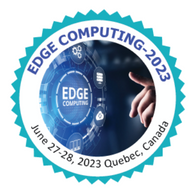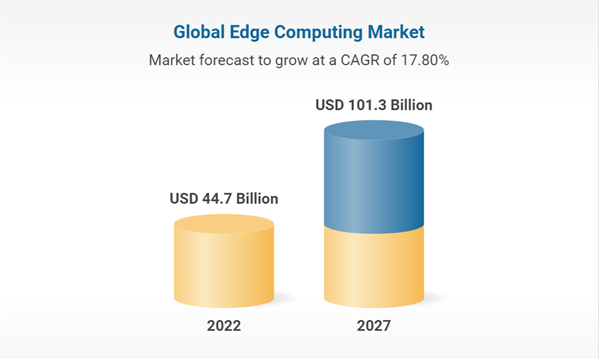Session & Tracks
1. Edge Computing Architecture.
Edge architecture is a disbursed computing architecture that encompasses all of the additives active in area computing all the devices, sensors, servers, clouds, etc. anywhere facts is processed or used on the some distance reaches of the community. Edge computing comprises of compute, garage, information control, statistics analysis and networking amongst others. Depending on the complexity of analytics needed, the computing infrastructure might variety from a simple MCU to a high cease GPU. Edge computing is already in use all around us from the wearable on your wrist to the computers parsing intersection site visitors go with the flow. Other examples consist of smart application grid analysis, protection tracking of oil rigs, streaming video optimization, and drone-enabled crop management.
2. Wireless communication and networking
A wireless network is a grouping, or network, of multiple biases where data is transferred and entered over radio frequentness. Wireless networks are different than wired networks, where one end of the data connection is physically connected by a string to enable communication with the other end. There are four types of wireless networks, wireless original area networks, wireless metropolitan area networks, wireless particular area networks and wireless wide area networks-- each with its own function. Below we bandy the different types of wireless networks and the colourful outfit and connections they bear.
3. IOT (Internet of Things)
The Internet of Things( IoT) describes the network of physical objects effects that are bedded with detectors, software, and other technologies for the purpose of connecting and swapping data with other bias and systems over the internet. The Internet of effects describes physical objects with detectors, recycling capability, software and other technologies that connect and change data with other bias and systems over the Internet or other dispatches networks.
4. Optical Communication
Optic communication systems transmit information optically through filaments. This is done by converting the original electronic signals into light beats employing ray or light- emitting diode light sources. An optic communication system uses a transmitter, which encodes a communication into an optic signal, a channel, which carries the signal to its destination, and a receiver, which reproduces the communication from the entered optic signal.
5. Edge Access Networks & Systems
The community side is generally defined as the region wherein a tool or nearby location community (LAN) connects to the Internet. It is referred to as the “facet,” because that is the access point to the community in which gadgets themselves are speaking with the Internet. Edge security is a kind of agency security for corporate resources which can be not placed in the defensive boundaries of a centralized datacenter. It's used to shield customers and apps at the farthest reaches, or “part,” of a enterprise's network, where touchy data is fairly susceptible to security threats. Routing switches, firewalls, multiplexers, and other wide place network (WAN) devices. Intelligent side gadgets have integrated processors with onboard analytics or synthetic intelligence skills. Such gadgets would possibly consist of sensors, actuators, and IoT gateways.
6. Signal Processing in Edge Computing
Edge computing moves some portion of storage and compute resources out of the central data center and closer to the source of the data itself. Rather than transmitting raw data to a central data center for processing and analysis, that work is instead performed where the data is actually generated -- whether that's a retail store, a factory floor, a sprawling utility or across a smart city. Only the result of that computing work at the edge, such as real-time business insights, equipment maintenance predictions or other actionable answers, is sent back to the main data center for review and other human interactions.Thus, edge computing is reshaping IT and business computing. Take a comprehensive look at what edge computing is, how it works, the influence of the cloud, edge use cases, tradeoffs and implementation considerations.
7. Edge Computing and Network Functions Virtualization
Edge computing brings IT resources to the network edge and network functions virtualization (NFV) allows the functions running at the edge to run in software rather than hardware. The virtualization of NFV allows the edge nodes to scale instances better than if it was a hardware-based environment. Edge virtualization is the practice of using software versions of physical computing resources at the edge of a network, closest to the devices that produce data.
8. Edge Centric Convergence of IoT & Cloud Computing
Internet of Things (IoT) is a widely distributed network which requires small amount of power supply having limited storage and processing capacity. On the other hand, Cloud computing has virtually unlimited storage and processing capabilities and is a much more mature technology. Cloud convergence is a trend that pulls in cloud technologies in all aspects of what we do and interact with, connecting things that were previously not related or connected. With cloud convergence, we'll increasingly see cloud computing and IoT concepts come together.
9. Storage and Caching at the Edge
Edge caching refers to the use of caching servers to store content closer to end users. For instance, if you visit a popular Web site and download some static content that gets cached, each subsequent user will get served that content directly from the caching server until it expires. Storage at the edge is the collective methods and technologies that capture and retain digital information at the periphery of the network, as close to the originating source as possible.
10. Sensor Technology
Sensing technology simply put, is a technology that uses sensors to acquire information by detecting the physical, chemical, or biological property quantities and convert them into readable signal. There are a wide variety of sensors available for practically any industrial need. A sensor converts the physical action to be measured into an electrical equivalent and processes it so that the electrical signals can be easily sent and further processed. The sensor can output whether an object is present or not present (binary) or what measurement value has been reached (analog or digital).
11. Mobile edge computing (MEC)
Multi-Access Edge Computing (MEC) moves the computing of business and services from a centralized pall to the edge of the network and near to the client. Mobile edge computing provides a largely distributed computing terrain that can be used to emplace operations and services as well as to store and process content in close propinquity to mobile druggies. Mobile edge computing( MEC), maybe better known moment as multi-access computing, is the near-real- time processing of large quantities of data produced by edge bias and operations closest to where it's captured in other words, extending the edge of your edge network structure.
12. Edge Computing for 5G/6G Network & Systems
Fifth-generation (5G) and sixth-generation (6G) cellular systems are expected to play a major part in enhancing our life in many fields. With new requirements, many novel services and applications are announced as preliminary use cases of the 5G/6G networks. These extreme requirements include ultra-high availability and reliability, ultra-high-speed of gigabits and terabits per second, and ultra-low latency of millisecond and sub-millisecond. These requirements introduce high constraints on the design of communication networks for such systems. Moreover, implementing the Internet of Things (IoT) with 5G/6G systems puts a new constraint on dense deployment since the number of connected gadgets is likely to increase dramatically to be of a density of million devices per Km2,
13. QoS & QoE at the Edge
Quality of Experience (QoE or QoX) is a measure of the overall level of customer satisfaction with a vendor. QoE is related to but differs from Quality of Service(QoS), which embodies the notion that hardware and software characteristics can be measured, improved and perhaps guaranteed. Edge computing is a distributed computing framework that brings enterprise applications closer to data sources such as IoT devices or local edge servers. This proximity to data at its source can deliver strong business benefits, including faster insights, improved response times and better bandwidth availability.
14. Blockchain & Zero Trust In Edge Computing
Edge computing brings computing, storage, and analytics closer to end devices that generate the data. Moreover, blockchain has the potential to solve the security and privacy issues associated with edge computing, such as access control, privacy, and authentication. Due to its prowess in enhancing cybersecurity, blockchain can provide zero trust security framework with highly accessible and transparent security mechanisms via a visible blockchain, in which all transactions are visible to restricted operators.
15. Edge Computing in Multi-cloud environments
Edge computing is an emerging computing paradigm which refers to a range of networks and devices at or near the user. Edge is about processing data closer to where it's being generated, enabling processing at greater speeds and volumes, leading to greater action-led results in real time. Multi-Access Edge Computing (MEC) moves the computing of traffic and services from a centralized cloud to the edge of the network and closer to the customer. Instead of sending all data to a cloud for processing, the network edge analyzes, processes, and stores the data.





